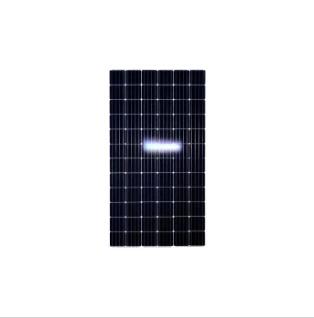Monocrystalline vs. Polycrystalline Solar Modules: Which One is Right for You
2024-08-13
As solar energy becomes increasingly popular, consumers are faced with a crucial decision: Should they choose monocrystalline or polycrystalline solar modules for their installation? Both types of solar panels have their own set of advantages and drawbacks, and understanding these can help you determine which is the best fit for your energy needs. In this blog, we'll delve into the key differences between monocrystalline and polycrystalline solar modules to guide your decision-making process.
1. Efficiency and Power Output
- Monocrystalline Solar Modules:
Monocrystalline solar modules are widely recognized for their superior efficiency. The single-crystal silicon structure enables these panels to convert sunlight into electricity more effectively, with efficiency ratings typically ranging from 17% to 22%. This high efficiency means that monocrystalline panels can generate more electricity in a smaller area, making them an excellent choice for homes with limited roof space.
- Polycrystalline Solar Modules:
Polycrystalline solar modules, while slightly less efficient, still offer a reliable and effective solution for solar power generation. With efficiency ratings between 15% and 17%, these panels require a bit more space to produce the same amount of electricity as their monocrystalline counterparts. However, they are often sufficient for properties with ample roof space or ground-mounted installations.
2. Cost Considerations
- Monocrystalline Solar Modules:
The higher efficiency of monocrystalline solar modules comes at a price. These panels are typically more expensive to produce, resulting in a higher upfront cost for consumers. However, the increased energy output can lead to greater savings on electricity bills over time, potentially offsetting the initial investment.
- Polycrystalline Solar Modules:
Polycrystalline panels are generally more affordable due to their simpler manufacturing process. This cost-effectiveness makes them a popular choice for large-scale solar projects or for homeowners looking to minimize upfront costs. While the efficiency is slightly lower, the overall savings on installation can make polycrystalline modules a more budget-friendly option.
3. Durability and Longevity
- Monocrystalline Solar Modules:
Monocrystalline panels are known for their durability and long lifespan. They are typically backed by warranties of 25 years or more, reflecting their ability to maintain high performance over time. The single-crystal structure is less prone to degradation, ensuring consistent energy production throughout the life of the panel.
- Polycrystalline Solar Modules:
Polycrystalline panels are also durable and long-lasting, though they may experience slightly more degradation over time compared to monocrystalline panels. However, they are still capable of delivering reliable energy production for many years, and many come with similar long-term warranties.
4. Aesthetic Appeal
- Monocrystalline Solar Modules:
The sleek, black appearance of monocrystalline panels is often preferred by homeowners who prioritize aesthetics. The uniform color and design can complement a variety of architectural styles, making these panels a popular choice for residential installations where visual appeal is important.
- Polycrystalline Solar Modules:
Polycrystalline panels have a blue hue with a speckled pattern, which some consumers may find less attractive. However, their appearance can still be pleasing, especially when integrated into larger commercial or industrial installations where aesthetics may be less of a concern.
5. Performance in Varied Conditions
- Monocrystalline Solar Modules:
Monocrystalline panels perform exceptionally well in a range of environmental conditions, including low-light situations and high temperatures. Their higher efficiency means they can generate more power even on cloudy days or during early morning and late afternoon hours.
- Polycrystalline Solar Modules:
Polycrystalline panels may be slightly less effective in low-light or high-temperature conditions, but they are still capable of producing significant amounts of electricity in most climates. Their performance is reliable in moderate environments, making them a solid choice for many geographic locations.
Conclusion: Making the Right Choice
When deciding between monocrystalline and polycrystalline solar modules, it's essential to consider your specific energy needs, budget, and aesthetic preferences. Monocrystalline panels offer higher efficiency, a sleek appearance, and excellent performance in diverse conditions, making them ideal for space-constrained installations. Polycrystalline panels, with their lower cost and reliable performance, are a great option for larger installations or for those looking to minimize upfront expenses.
Ultimately, both types of solar panels provide a sustainable and effective way to harness solar energy. By understanding the key differences between monocrystalline and polycrystalline modules, you can choose the option that best aligns with your goals and circumstances, ensuring a successful and satisfying solar installation.



